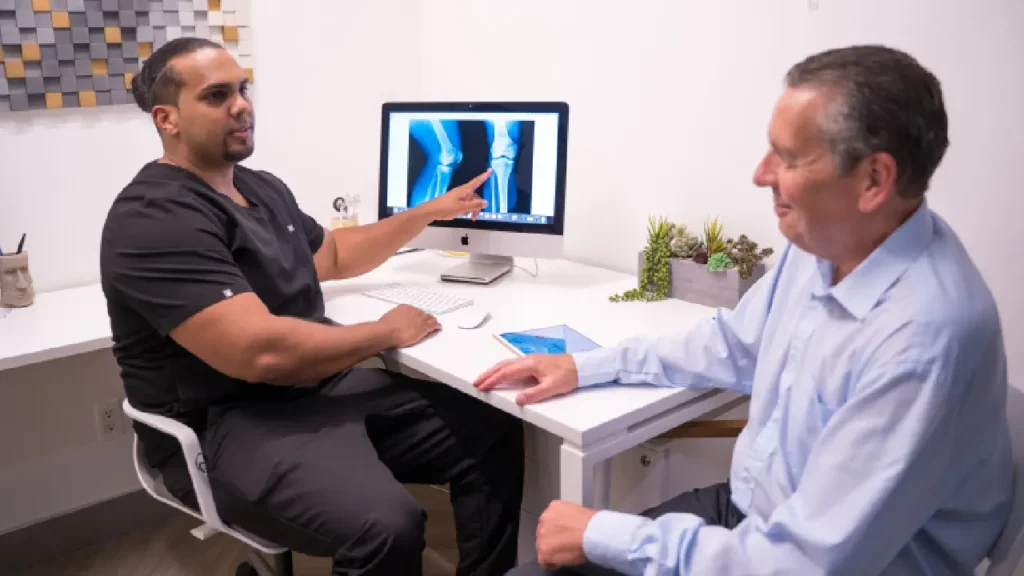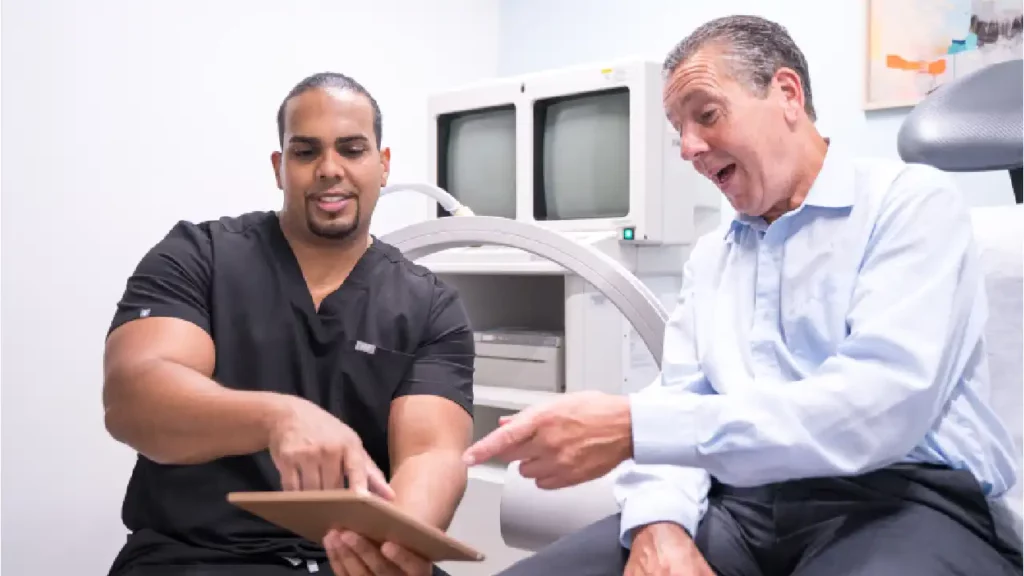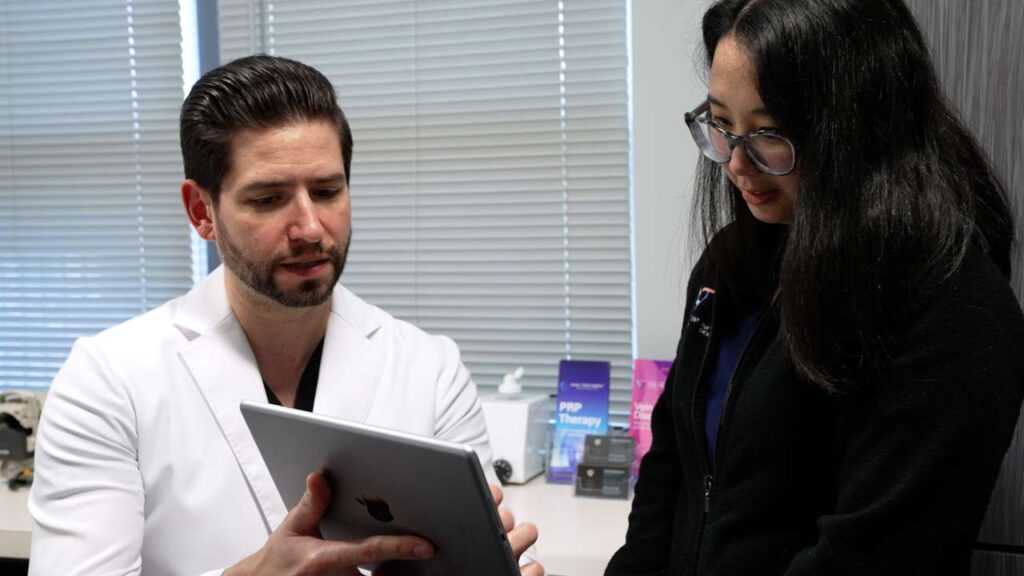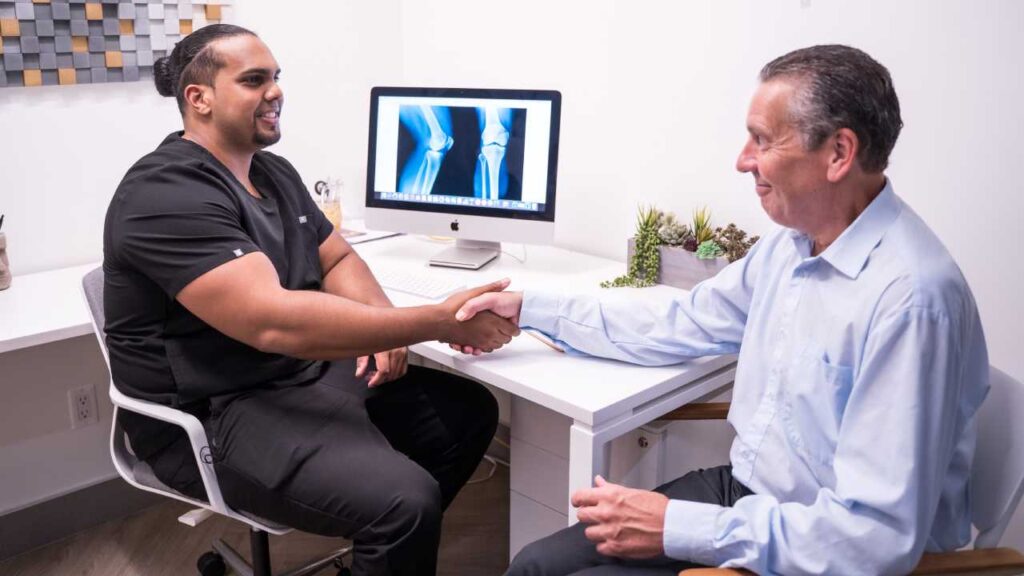Do You Have Spider Veins or Broken Capillaries on Your Legs?
Are you beginning to develop spider veins on your legs? Are you wondering whether spider veins and broken capillaries on legs ever just disappear? The answer is, very rarely. Occasionally, when people develop spider veins from pregnancy or weight gain, they become less visible after the weight is lost. But most spider veins require vein treatment in order to go away.
Some spider veins are optional to treat, while others signify vein disease and are accompanied by varicose veins or symptoms like heaviness, restlessness, cramping, pinching, and itchiness in the legs. Patients with asymptomatic spider veins often choose to treat them anyway, since they don’t like how they look. Click HERE to erase your spider veins in minutes at our New Jersey leg vein center. Or read on to learn what you need to know about spider vein removal.
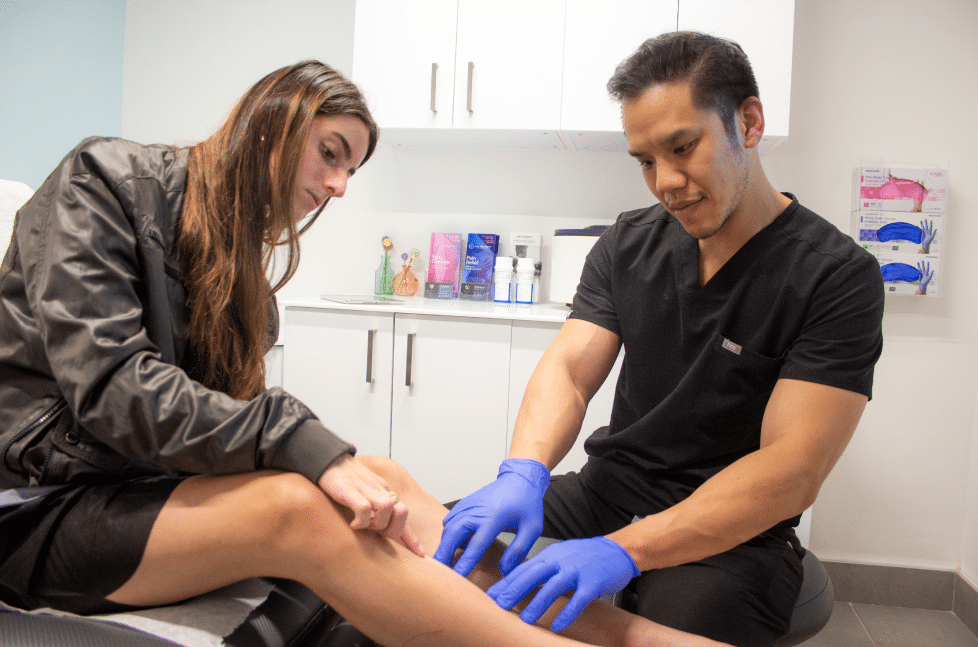
Is Varicose Veins or Spider Veins Treatment Necessary?
If you have varicose veins or spider veins, treatment is necessary if you want to get rid of them. Some veins might not require treatment, for instance spider veins on the face of a child, but it’s a choice many patients still make in order to restore the beauty of their skin and to eradicate the symptoms that often coincide with vein damage.
Other unhealthy veins do require treatment, especially if they’re caused by Chronic Venous Insufficiency, a common disease that imposes increased pressure against vein walls and generates frustrating symptoms like leg heaviness, restlessness, achiness, and swelling. Left untreated, this disease can progress and cause venous ulcerations, bleeding that’s hard to control, and venous stasis dermatitis. Whether your veins are bothering you emotionally or physically, visit our award-winning New Jersey vein center for quick relief.
Is There an At-Home Spider Vein or Varicose Vein Treatment?
There are some steps you can take at home to improve the symptoms of spider veins and varicose veins and to help prevent more from developing. However, the cause behind most vein damage is a broken valve inside the vein, which is not something you can fix at home. Schedule an appointment for our vein specialists to treat your spider veins, and then try these home remedies to ease your symptoms until your appointment:
- Elevate your legs above your heart while resting
- Change positions frequently
- Don’t sit or stand for more than an hour at a time
- Exercise, but don’t overtrain
- Manage your weight and salt intake
- Wear compression stockings if your doctor advised them
- Wear comfortable, supportive shoes
What Can Get Rid of Varicose Veins & Spider Veins for Good?
Lifestyle adjustments like those listed above can help with symptoms, but only a medical procedure can get rid of varicose veins or spider veins permanently. Since these veins usually stem from Chronic Venous Insufficiency, you need a vein doctor to treat that problem, to prevent new veins from popping out on your legs.
Our New Jersey vein doctors use innovative tools for spider vein removal like sclerotherapy, radiofrequency ablation, and vein adhesives. All of our procedures are minimally invasive and conducted in-office without general anesthesia. We treat the vein inside the body, rather than extracting it, as with vein surgery. Most patients do not need surgery to treat spider veins, so we resolve them with tiny needles inserted at the surface of the skin, allowing patients to resume their normal activities immediately.
Is Spider Vein Removal by Sclerotherapy a Surgical Treatment?
The most common treatment for spider veins is sclerotherapy. This is not a surgical treatment, and it’s not technically a removal of the spider vein, despite it being phrased that way. In sclerotherapy, doctors inject a sclerosant, which is a detergent-like irritant, directly into the vein, causing the vein walls to swell and seal shut. This blocks blood from entering the faulty vein, causing it to flow in a new direction that efficiently carries it back to the heart. The vein is then harmlessly absorbed by the body and proper circulation is restored.
Sclerotherapy and other newer procedures reduce the risks associated with surgery, like infection, scar tissue, pain, swelling, and blood clots. In addition, our gentle treatments don’t require hospitalization and are commonly covered by insurance, which saves our patients time and money.
Thick vs. Red Veins on Legs: Is Getting Rid of Them Similar?
If you have protruding, thick veins, rather than small red veins on the legs, getting rid of them might not be exactly the same process. Bulging, enlarged blood vessels are often varicose veins, whereas small blood vessels that don’t protrude at the surface of the skin are typically spider veins. Both veins can be treated with things like sclerotherapy, however the procedure might differ a bit.
Small spider veins might respond well to a liquid sclerosant, while large varicose veins might require a foam sclerosant that can fill a larger space without increasing the dose of medicine too much. Our NJ vein specialists are experts at customizing treatment to deliver outstanding results. We often treat multiple veins in a single appointment and combine methods for the optimal outcome. If you have both spider veins and varicose veins, treatment is quick and easy at our award-winning vein center in New Jersey.
Spider & Varicose Vein Removal Before and After: Is it Fast?
When you choose minimally invasive spider or varicose vein removal, before and after the procedure there will be an instant difference. While it takes a little time for the vein to completely vanish, you’ll see and feel the medication working right away. The vein seals shut as we administer radiofrequency, sclerosants, or adhesives, so you’ll begin healing the moment the process is done.
There is no downtime or recovery period, and patients can head straight back to work. Patients might have mild swelling depending on the procedure, but this is short-lived. Otherwise, there are no visible signs like scarring, large bandages, or big incisions, which makes our vein treatments very discreet. Our procedures are done in less than 30 minutes, and that includes treatment for vein disease. So, if you want to know, “Do spider veins go away?” The answer is, “Yes, when you visit our vein center!” Carve out a few minutes to erase your spider veins once and for all with our Harvard-trained vein doctors!
